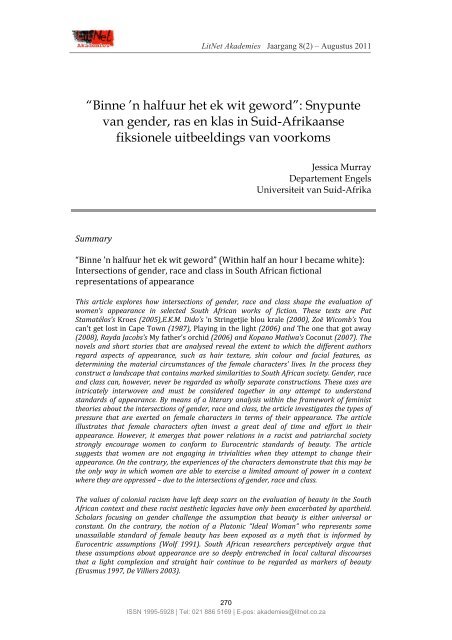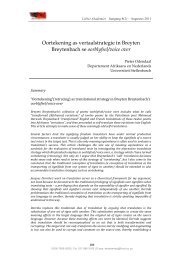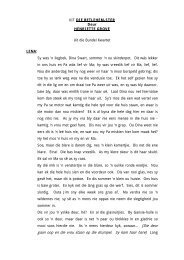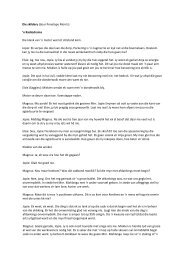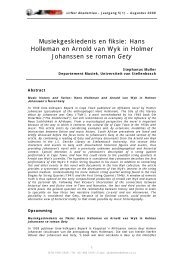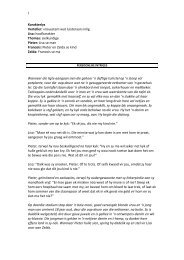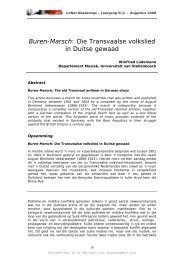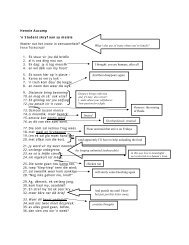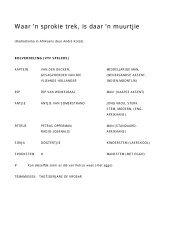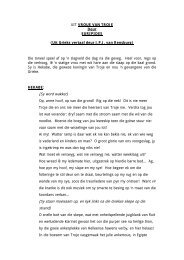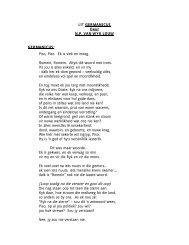Jaargang 8, nommer 2 – Augustus 2011 - LitNet
Jaargang 8, nommer 2 – Augustus 2011 - LitNet
Jaargang 8, nommer 2 – Augustus 2011 - LitNet
Create successful ePaper yourself
Turn your PDF publications into a flip-book with our unique Google optimized e-Paper software.
<strong>LitNet</strong> Akademies <strong>Jaargang</strong> 8(2) <strong>–</strong> <strong>Augustus</strong> <strong>2011</strong><br />
“Binne ’n halfuur het ek wit geword”: Snypunte<br />
van gender, ras en klas in Suid-Afrikaanse<br />
fiksionele uitbeeldings van voorkoms<br />
Summary<br />
Jessica Murray<br />
Departement Engels<br />
Universiteit van Suid-Afrika<br />
“Binne ’n halfuur het ek wit geword” (Within half an hour I became white):<br />
Intersections of gender, race and class in South African fictional<br />
representations of appearance<br />
This article explores how intersections of gender, race and class shape the evaluation of<br />
women’s appearance in selected South African works of fiction. These texts are Pat<br />
Stamatélos’s Kroes (2005),E.K.M. Dido’s ’n Stringetjie blou krale (2000), Zoë Wicomb’s You<br />
can’t get lost in Cape Town (1987), Playing in the light (2006) and The one that got away<br />
(2008), Rayda Jacobs’s My father’s orchid (2006) and Kopano Matlwa’s Coconut (2007). The<br />
novels and short stories that are analysed reveal the extent to which the different authors<br />
regard aspects of appearance, such as hair texture, skin colour and facial features, as<br />
determining the material circumstances of the female characters’ lives. In the process they<br />
construct a landscape that contains marked similarities to South African society. Gender, race<br />
and class can, however, never be regarded as wholly separate constructions. These axes are<br />
intricately interwoven and must be considered together in any attempt to understand<br />
standards of appearance. By means of a literary analysis within the framework of feminist<br />
theories about the intersections of gender, race and class, the article investigates the types of<br />
pressure that are exerted on female characters in terms of their appearance. The article<br />
illustrates that female characters often invest a great deal of time and effort in their<br />
appearance. However, it emerges that power relations in a racist and patriarchal society<br />
strongly encourage women to conform to Eurocentric standards of beauty. The article<br />
suggests that women are not engaging in trivialities when they attempt to change their<br />
appearance. On the contrary, the experiences of the characters demonstrate that this may be<br />
the only way in which women are able to exercise a limited amount of power in a context<br />
where they are oppressed <strong>–</strong> due to the intersections of gender, race and class.<br />
The values of colonial racism have left deep scars on the evaluation of beauty in the South<br />
African context and these racist aesthetic legacies have only been exacerbated by apartheid.<br />
Scholars focusing on gender challenge the assumption that beauty is either universal or<br />
constant. On the contrary, the notion of a Platonic “Ideal Woman” who represents some<br />
unassailable standard of female beauty has been exposed as a myth that is informed by<br />
Eurocentric assumptions (Wolf 1991). South African researchers perceptively argue that<br />
these assumptions about appearance are so deeply entrenched in local cultural discourses<br />
that a light complexion and straight hair continue to be regarded as markers of beauty<br />
(Erasmus 1997, De Villiers 2003).<br />
270<br />
ISSN 1995-5928 | Tel: 021 886 5169 | E-pos: akademies@litnet.co.za


